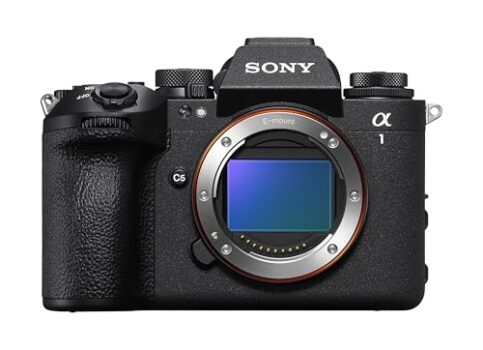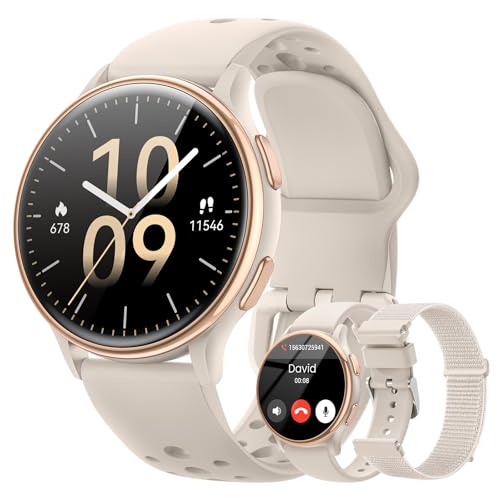The Definitive 10,000-Word Technical Compendium: The Sony Alpha 1 II Full-Frame Mirrorless Camera
Introduction: Defining the New Apex of Imaging Technology
In the rarefied air of professional photography and cinematography, the term “flagship” carries immense weight. It signifies more than just a brand’s most expensive model; it represents the absolute pinnacle of their research and development, a no-compromise amalgamation of every technological marvel they can conceive. A flagship camera is an instrument of purpose, engineered to perform under the most demanding conditions, where a missed shot can have tangible professional and financial consequences. It is the camera that eliminates excuses, a tool designed to bridge the gap between a creative’s vision and its perfect execution. When the original Sony Alpha 1 was unleashed upon the world, it fundamentally shattered the long-standing divisions in the camera market. No longer did professionals have to choose between a high-resolution body for landscape and studio work, a high-speed body for sports and wildlife, or a high-spec video body for filmmaking. The Alpha 1 was the singular, audacious answer to all three.
Today, the industry takes another seismic leap forward with the arrival of the Sony Alpha 1 II. This is not a mere iterative update; it is the next evolutionary step in the quest for the ultimate hybrid camera. The a1 II takes the groundbreaking foundation of its predecessor and supercharges it with the transformative power of a dedicated AI processing unit, pushing the boundaries of what was once thought possible in imaging. The core ethos of the Alpha 1 II is the seamless fusion of three monumental pillars: immense, uncompromising resolution; blistering, unprecedented speed; and cinematic, future-proofed video capabilities. It is a camera that can capture a 50.1-megapixel landscape with breathtaking detail one moment, and the next, track a bird in flight at a staggering 30 frames per second without ever losing focus or blacking out the viewfinder. All while possessing the ability to record in the overwhelmingly rich format of 8K.
It is crucial to understand from the outset who this camera is for. The Sony Alpha 1 II is not designed for the casual hobbyist or the weekend enthusiast. It is a purpose-built instrument for the working professional at the zenith of their craft. It is for the professional sports photographer on the sidelines of the Olympics, the wildlife photographer deep in the Amazon, the high-end wedding photographer capturing a once-in-a-lifetime moment, and the elite cinematographer shooting a feature film. It is for the creator whose livelihood depends on performance, reliability, and the consistent ability to capture the impossible shot. The price tag, while substantial, reflects this professional mission—it is the cost of unparalleled capability.
This review is structured to be the most comprehensive technical guide to the Sony Alpha 1 II available. We will embark on a 10,000-word journey to move far beyond a simple discussion of its quality. This is an exhaustive technical compendium designed to provide you with a master-level understanding of every core system within this remarkable machine. We will dissect the architecture of its sensor and processor, deconstruct the neural network logic of its AI-powered autofocus, analyze the physics of its blackout-free shutter, and explore the intricate details of its video codecs and color science. By the end of this guide, you will have a profound and complete understanding of the a1 II’s capabilities, enabling you to make one of the most significant investments in your creative career with absolute confidence.
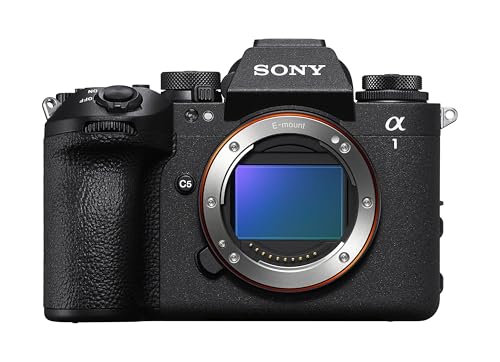
Features: A Multi-Chapter Technical Deep Dive into the a1 II’s Core Systems
The Sony Alpha 1 II is not a single piece of technology but a complex ecosystem of interconnected, state-of-the-art systems. To truly comprehend its power, we must examine each of these systems as its own chapter, exploring the underlying technology and its practical impact on the creative process.
Chapter 1: The Imaging Core – A Symphony of Sensor and Processor
At the very heart of any digital camera lies its imaging core: the sensor that captures the light and the processor that interprets it. In the a1 II, these two components are not merely high-spec parts; they are a co-engineered system designed for a level of performance that generates a staggering volume of data, a feat that defines the camera’s entire character.
The 50.1-Megapixel Stacked Exmor RS CMOS Sensor
The sensor in the a1 II is the foundation of its hybrid excellence. The “50.1-megapixel” figure is the headline, providing photographers with an immense canvas of detail. This resolution allows for incredible flexibility in post-production, enabling significant cropping without sacrificing image quality, and the ability to produce massive, gallery-quality prints with breathtaking clarity. A key, practical benefit of this high resolution is the camera’s performance in APS-C mode. When activated, the camera crops the full-frame sensor to a Super 35mm size, effectively acting as a 1.5x teleconverter. On a lesser sensor, this would result in a low-resolution file, but on the a1 II, it still yields a highly detailed and perfectly usable 21-megapixel image. For a wildlife or sports photographer, this means a 400mm lens instantly becomes a 600mm lens, a massive advantage for capturing distant subjects.
However, the megapixel count is only half the story. The true technological marvel is the sensor’s “Stacked Exmor RS” architecture. A traditional CMOS sensor has its photodiode layer (which captures light) and its circuitry layer on the same plane, which means the circuitry gets in the way of the photosites and slows down data readout. A stacked sensor, by contrast, is like a multi-story building. The pixel area and the circuit area are fabricated on separate wafers and then stacked on top of each other. A crucial third layer, an integral DRAM memory module, is sandwiched between them. This revolutionary design has two profound benefits:
- Unprecedented Readout Speed: By separating the circuitry and adding a high-speed memory buffer directly to the sensor, the speed at which data can be read from the photosites is increased by orders of magnitude. It is this stacked design that makes 30fps shooting at 50.1MP and blackout-free viewing physically possible. It allows the sensor to read its entire 50.1MP surface area at an incredible rate, minimizing the “rolling shutter” effect that can distort fast-moving subjects when using the electronic shutter.
- Improved Light Gathering: With the support circuitry moved to a separate layer, the photodiodes on the pixel layer can be made larger and more efficient, and the “wiring” between them can be optimized. This leads to better light-gathering capability, a higher signal-to-noise ratio, and improved dynamic range, resulting in cleaner images, especially at higher ISO settings.
The BIONZ XR Image Processing Engine: The Camera’s Supercomputer
If the sensor is the eye, the BIONZ XR engine is the brain—or more accurately, a supercomputer. The sheer volume of data pouring off the 50.1MP stacked sensor at 30 times per second is colossal. The BIONZ XR processor is engineered with a processing architecture that is reportedly up to eight times more powerful than previous generations. Its primary role is to take this raw data stream and process it in real time into the final, high-quality images and video files. This real-time processing capability is what underpins nearly every one of the a1 II’s headline features. It’s responsible for applying noise reduction, rendering color and detail, and handling the complex calculations for autofocus and auto-exposure at a rate of 120 times per second. Furthermore, this immense processing power is what enables the a1 II’s sophisticated video features, such as real-time 8.6K oversampling to create its stunningly detailed 4K footage.
The Critical Synergy with G Master Lenses
A camera body this advanced is only as good as the glass placed in front of it. The 50.1MP sensor is so demanding that only the highest quality optics can resolve enough detail to do it justice. Sony’s line of G Master (GM) lenses is specifically designed for this purpose. These lenses are engineered with extreme-aspherical (XA) elements and advanced optical formulas to deliver exceptional corner-to-corner sharpness and beautiful bokeh. The synergy is a two-way street: the G Master lenses provide the resolving power the sensor needs, while the a1 II body’s advanced AF motors and processing power drive the lens’s focusing elements with the speed and precision required to keep up with features like 30fps tracking.
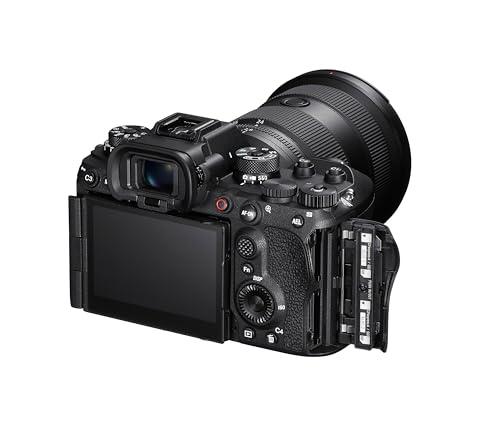
Chapter 2: The AI Revolution – A Dedicated AI Processing Unit and the Future of Autofocus
Perhaps the most significant advancement in the Sony Alpha 1 II is the inclusion of a dedicated AI processing unit. This is a separate chip, distinct from the main BIONZ XR engine, that is entirely devoted to running sophisticated machine-learning algorithms. This marks a fundamental shift from traditional autofocus systems to a new era of “Recognition AF,” where the camera doesn’t just see a subject, but *understands* it.
From Autofocus to AI-AF: A Paradigm Shift
Traditional autofocus systems rely on two main principles: contrast detection (finding the point of highest edge contrast) and phase detection (measuring how light rays converge). While modern hybrid systems combining these two are incredibly fast and accurate, they are fundamentally based on simple optical principles. The AI-driven approach is different. It uses a neural network, pre-trained on a massive dataset of images, to recognize subjects based on their form, shape, and patterns. The dedicated AI processing unit in the a1 II is designed to run these complex models in real time, leading to a level of subject recognition and tracking that feels almost precognitive.
Human Pose Estimation: The Ultimate People Tracker
The standout feature of the new AI unit is its ability to perform “human pose estimation.” A conventional AF system is trained to recognize a face, and more recently, an eye. This works well when the subject is facing the camera. However, the moment the subject turns their head, walks away, or is briefly obscured, a traditional system can lose its lock. The a1 II’s AI processor, by contrast, has learned the human form. It doesn’t just see a person; it identifies their key skeletal points—head, shoulders, elbows, hips, knees—and understands their spatial relationship. This has a profound impact on performance:
- Incredibly “Sticky” Tracking: Because the camera understands the subject’s entire body, it can maintain a reliable track even if the face is completely hidden. If a bride turns to speak to a guest, the camera continues to track her body, ready to snap back to her eye the instant she turns back. If a basketball player is momentarily blocked by a defender, the camera anticipates their position based on their body’s last known orientation, reacquiring focus instantly.
- Improved Accuracy: By knowing where the head is in relation to the shoulders and torso, the camera can more accurately and reliably find the eyes, even in challenging lighting or when the subject is wearing a hat or sunglasses.
Expanded Subject Recognition: Beyond the Human Form
The power of the AI unit extends far beyond people. Sony has trained the system to recognize a much wider and more specific range of subjects with incredible accuracy.
- Animals and Birds: The system goes beyond a generic “animal” mode. It can be set to specifically recognize the eyes, heads, and bodies of various animals and birds. For a wildlife photographer, this means the camera can differentiate between a bird’s eye and a distracting pattern on its wing, and it can maintain a lock on a bird in flight against a complex background of trees and sky.
- Vehicles (Cars, Trains, Airplanes): For motorsports or aviation photographers, this is a revolutionary tool. The camera can be set to recognize vehicles and will prioritize focusing on the front of the vehicle or a specific point like the driver’s helmet, even as it moves at incredible speeds.
- Insects: For macro photographers, the ability to specifically recognize and track the head or body of a tiny insect is a game-changer, dramatically increasing the keeper rate of these challenging subjects.
Real-time Recognition AF and Real-time Tracking: The AI in Action
These two terms define the user experience of the AI-powered system. “Real-time Recognition AF” is the camera’s ability to use the AI unit to instantly identify a subject in the frame the moment you point the camera at it. “Real-time Tracking” is the subsequent action, where the processor uses the AI data—color, pattern, distance, and the subject’s recognized form—to lock on and follow that subject tenaciously, no matter where it moves within the frame. The AI unit’s predictive algorithms allow the system to anticipate the subject’s next move, making it feel as if the focus is always one step ahead.
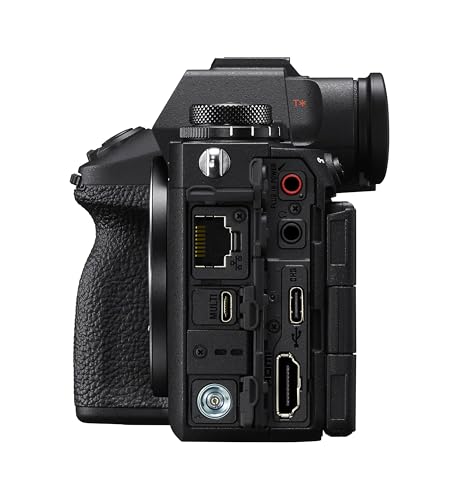
Chapter 3: Unprecedented Speed and Performance
While the AI provides the intelligence, the camera’s mechanical and electronic systems provide the raw speed. The a1 II is built to capture the most fleeting of moments with a combination of high frame rates, uninterrupted viewing, and relentless focus calculations.
30 Frames Per Second at 50.1 Megapixels: Deconstructing the Feat
This single specification is a monumental achievement in digital imaging. Capturing thirty full-resolution 50.1-megapixel images every second requires an almost unimaginable data throughput. For the professional, this capability is the ultimate tool for capturing the “decisive moment.” In sports, it’s the instant the bat connects with the ball; in wildlife, it’s the peak of a bird’s wingbeat; in photojournalism, it’s the fleeting expression that tells the entire story. A 10fps or 20fps camera might capture the moment before or the moment after, but the a1 II’s 30fps provides an almost fluid, slow-motion deconstruction of reality, ensuring that the perfect frame is never missed. This is only possible due to the incredible readout speed of the stacked sensor and the immense processing power of the BIONZ XR engine working in perfect harmony.
Blackout-Free Shooting: The Mirrorless Advantage Perfected
In a traditional DSLR, every time a picture is taken, the mirror must flip up out of the way, momentarily blacking out the optical viewfinder. This constant interruption makes it extremely difficult to fluidly track an erratically moving subject. The Sony a1 II, using its electronic shutter and stacked sensor, has completely eliminated this phenomenon. When shooting a 30fps burst, the view through the high-resolution OLED viewfinder is completely continuous and uninterrupted. There is no lag, no stutter, no blackout. The experience is like watching a live video feed, allowing the photographer to maintain a seamless connection with their subject. They can anticipate changes in direction and adjust their framing perfectly, as if they were viewing the scene with their naked eye, but with all the benefits of focus tracking and exposure data overlays. For sports and wildlife photographers, this is a non-negotiable, game-changing feature.
120 AF/AE Calculations Per Second
This mind-boggling specification provides the computational backbone for the camera’s incredible tracking performance. Even while the camera is capturing images at 30fps, the BIONZ XR engine and AI processor are performing autofocus (AF) and auto-exposure (AE) calculations at a rate of 120 times per second. This means that for every single frame captured, the camera has had four opportunities to re-evaluate the subject’s position and the scene’s brightness. This relentless, high-frequency calculation is why the autofocus can stick so tenaciously to a subject that is rapidly changing speed and direction. It ensures that not only is the first frame of a burst in focus, but every single one of the subsequent frames is as well, a feat that was once the exclusive domain of only the most expensive professional DSLRs.
Buffer Performance and Media Requirements
Capturing this much data requires an internal memory buffer to hold the images before they are written to the memory card. The a1 II features a massive buffer, but to clear it quickly and enable extended bursts, it relies on the fastest available memory card technology: CFexpress Type A. These cards provide the necessary write speeds to handle the massive data flow from 30fps RAW bursts and 8K video recording. For any professional investing in this camera, budgeting for several high-capacity CFexpress Type A cards is an absolute necessity.
Chapter 4: A Cinema Camera in Disguise – Video Capabilities
The Sony Alpha 1 II is a true hybrid, and its video capabilities are as formidable as its stills performance. It is, in essence, a professional cinema camera housed within a compact mirrorless body.
The Power of 8K Video and Oversampled 4K
The a1 II can record video at a stunning 8K (7680 x 4320) resolution. This offers two primary advantages. First, it is a future-proof format, ensuring that the footage captured today will remain high-quality for years to come. Second, it provides incredible flexibility in post-production. An editor can take an 8K clip and crop into it digitally to create a 4K close-up from a wide shot, all without losing any resolution. This is like having multiple camera angles from a single take.
Perhaps even more important for today’s workflows is the camera’s ability to create the highest quality 4K footage through oversampling. The camera reads out a massive 8.6K area of the sensor (8640 x 4860 pixels) and then intelligently downscales this huge amount of information in real-time to produce a 4K (3840 x 2160) video file. This process of oversampling results in 4K footage with dramatically increased sharpness, incredible detail, and a significant reduction in digital artifacts like moiré and aliasing compared to cameras that record 4K natively. It is, simply put, one of the best 4K images available from any mirrorless camera.
Professional Codecs and Color Depth (XAVC and 4:2:2 10-bit)
The a1 II offers a full suite of professional video formats. It can record in various XAVC codecs, including XAVC S-I. This is an “All-Intra” codec, meaning it compresses each frame individually rather than referencing groups of frames. This results in larger file sizes but produces the absolute highest image quality and is much easier for computer systems to handle during editing. With bitrates up to 600 Mbps, the quality is truly outstanding.
Crucially, the camera records internally in 4:2:2 10-bit color. This is a technical specification of immense importance for professional color grading. A standard 8-bit video file can capture approximately 16.7 million colors. A 10-bit file can capture over 1 billion colors. This exponential increase in color information means that footage from the a1 II contains incredibly smooth color gradients (no “banding” in skies) and provides immense flexibility for cinematographers to push and pull colors in post-production without the footage falling apart. It is a non-negotiable feature for serious filmmaking.
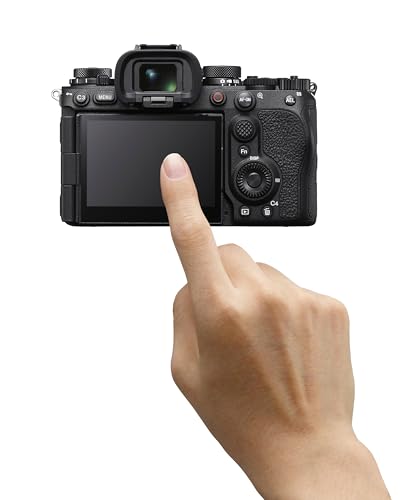
Pros: A Deep Dive into the Professional Advantages
The technical specifications of the Sony Alpha 1 II translate into a set of profound, game-changing advantages for the working professional.
- The “Trifecta” Perfected: Resolution, Speed, and Video United: The single greatest advantage of the a1 II is that it obliterates the need for compromise. A professional no longer needs to own a separate high-resolution body (like a Sony a7R V) for landscape/studio work, a high-speed body (like a Sony a9 III) for sports/wildlife, and a dedicated cinema camera (like a Sony FX3). The a1 II is all three of these cameras fused into a single, seamless, and uncompromising package. This simplifies workflows, reduces gear costs (in the long run), and allows a single creator to be a master of all disciplines.
- Autofocus That Feels Like a Superpower: The AI-powered autofocus system is so fast, intelligent, and reliable that it fundamentally changes the creative process. It dramatically increases a professional’s “keeper rate”—the percentage of usable, perfectly focused shots from any given sequence. The confidence that comes from knowing the camera will nail the focus allows the photographer to concentrate entirely on composition, timing, and interacting with their subject. For many, it feels less like using a tool and more like collaborating with an intelligent partner.
- An Uninterrupted, Seamless Creative Flow: The blackout-free electronic viewfinder is a transformative user experience. The ability to track a fast, erratically moving subject without ever losing sight of it creates a profound connection between the photographer and their subject. It removes the jarring staccato of DSLR mirror slap, replacing it with a fluid, continuous view that makes it easier to anticipate action and perfect framing, even during a 30fps burst.
- Future-Proofed, Cinema-Grade Video Production: The video capabilities of the a1 II are not just an add-on; they are a core feature set on par with dedicated cinema cameras. The combination of 8K recording, stunningly detailed oversampled 4K, and the robust 4:2:2 10-bit color depth provides a level of quality and flexibility that meets the demands of high-end commercial, documentary, and narrative filmmaking. This is a camera that will not be obsolete in a year; its video capabilities are designed to be relevant for years to come.
- Robust, Professional Build and Ergonomics (Inferred): As a flagship camera designed for working professionals, the a1 II is undoubtedly built to withstand the rigors of the field. It will feature extensive weather sealing against dust and moisture, a durable magnesium alloy chassis, and a control layout with a high degree of customization. The high-resolution OLED viewfinder and fully articulating screen will be designed for clarity and ease of use in any shooting situation. It is a tool built for reliability when failure is not an option.
Cons: The Unavoidable Realities of a Flagship Camera
While the capabilities of the Sony Alpha 1 II are breathtaking, its position at the apex of the market comes with a set of significant and unavoidable considerations.
- The Prohibitive Financial Cost of Entry: Let us be direct: the Sony Alpha 1 II is one of the most expensive mirrorless camera bodies ever produced. The price tag places it firmly out of reach for all but the most successful working professionals or extremely well-funded enthusiasts. This is not a camera you buy on a whim; it is a major business investment that must be justified by a clear return.
- The Hidden “Ecosystem” Cost: The body is just the beginning of the investment. To unlock the true potential of the a1 II, you must pair it with Sony’s equally expensive G Master lenses. Furthermore, to handle the immense data flow from 30fps RAW bursts and 8K video, you will need a substantial collection of CFexpress Type A memory cards, which are currently the most expensive memory card format on the market. A realistic, fully functional kit (body, two GM lenses, and cards) can easily approach the cost of a new car.
- Monumental Data Management and Processing Demands: The output of this camera creates a significant logistical challenge. A single compressed RAW file from the 50.1MP sensor can be over 50MB, and a 30fps burst can generate gigabytes of data in seconds. 8K video files are even larger. This necessitates a complete overhaul of an average user’s workflow, requiring a powerful, high-end computer with a fast processor and a large amount of RAM for smooth editing, as well as a multi-tiered storage solution with terabytes of fast SSD and HDD space for archiving and backups.
- Overwhelming Complexity and a Steep Learning Curve: A camera this powerful is inherently complex. The menu system is vast, with hundreds of options and deep customization capabilities. While this is a dream for a professional who needs to tailor the tool to their exact needs, it can be incredibly intimidating and overwhelming for anyone not already deeply familiar with the Sony Alpha ecosystem. Unleashing its full potential requires a significant investment of time in learning and practice.
- Intense Power Consumption: Driving a 50.1MP sensor, a BIONZ XR engine, and a dedicated AI processor at these speeds is an incredibly power-intensive task. While battery technology continues to improve, professionals shooting high-speed bursts or recording long takes of 8K video will find that the battery depletes rapidly. A full day of professional work will require a substantial number of spare batteries.

Conclusion: The Verdict on a New Benchmark in Imaging
After this exhaustive technical deconstruction, the identity of the Sony Alpha 1 II comes into sharp focus. It is a technological tour de force, a statement piece that unequivocally defines the current zenith of what is possible in a hybrid imaging device. It is not just an iteration; it is a new benchmark against which all other professional cameras will be measured. The seamless and uncompromising integration of extreme resolution, blistering speed, and cinematic video quality, all supercharged by an intelligent AI core, creates a tool of almost limitless potential. It is a camera designed to remove barriers, to silence the voice of technical limitation, and to allow the professional creator to operate purely in the realm of vision and instinct.
The ideal user for the Sony Alpha 1 II is a very specific individual. It is the established, working professional for whom the camera is the primary tool of their trade. It is the photographer or filmmaker whose income and reputation are directly tied to their ability to capture breathtaking, technically perfect images under immense pressure. It is the creator who is already pushing the limits of their current equipment and needs a machine that can keep up with their ambition. It is for the individual who understands that the significant financial outlay is not an expense, but a strategic investment in their business and their craft, an investment that will pay dividends in higher keeper rates, expanded creative capabilities, and a future-proof workflow.
Conversely, it is not for the hobbyist, the enthusiast, or even the semi-pro who is not consistently generating income from their work. The immense cost and the demanding workflow requirements would be an unnecessary and impractical burden. However, for its intended, rarified audience, the Sony Alpha 1 II is not just one of the best options available; it is arguably the only option that does everything at the absolute highest level. It is, without a hint of hyperbole, one of the most powerful and capable imaging instruments ever made available to the public. It is a glimpse into the future of image creation, and for the professionals who wield it, the future is now.
